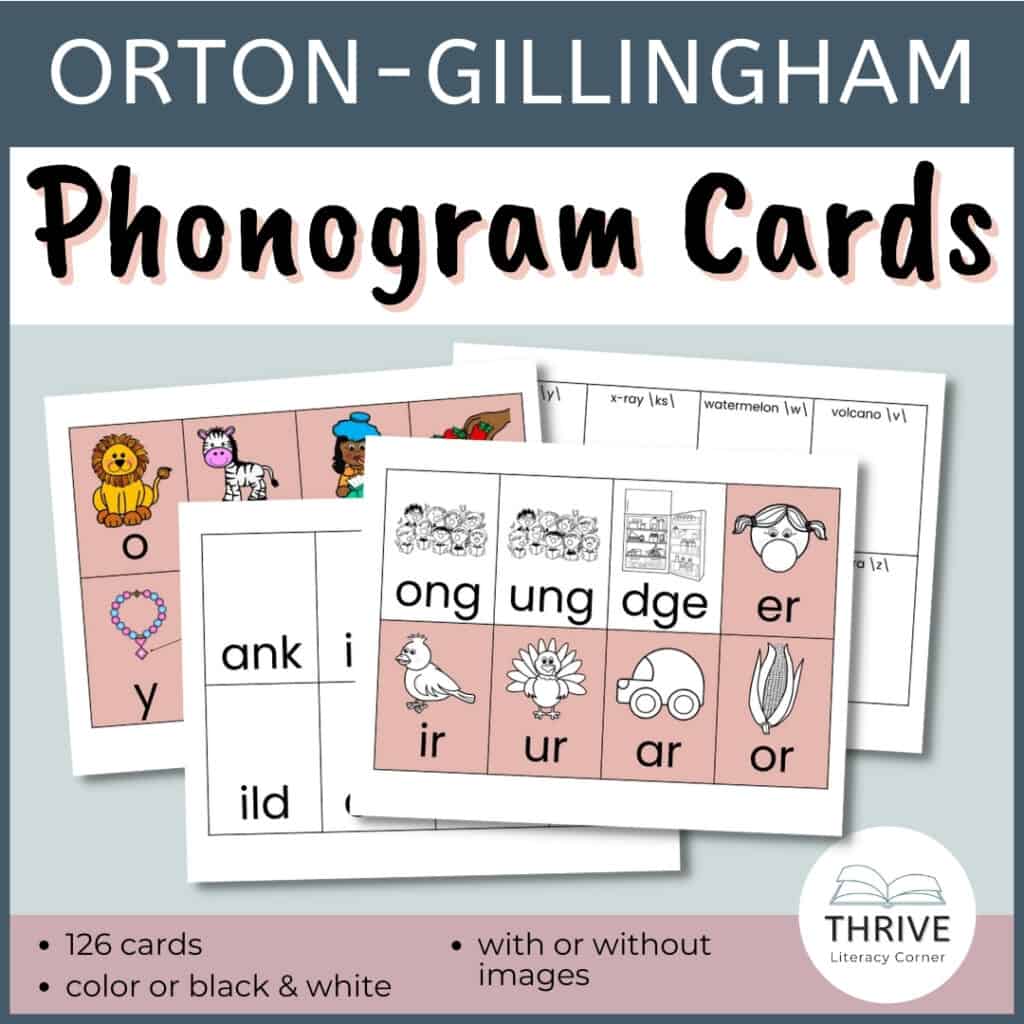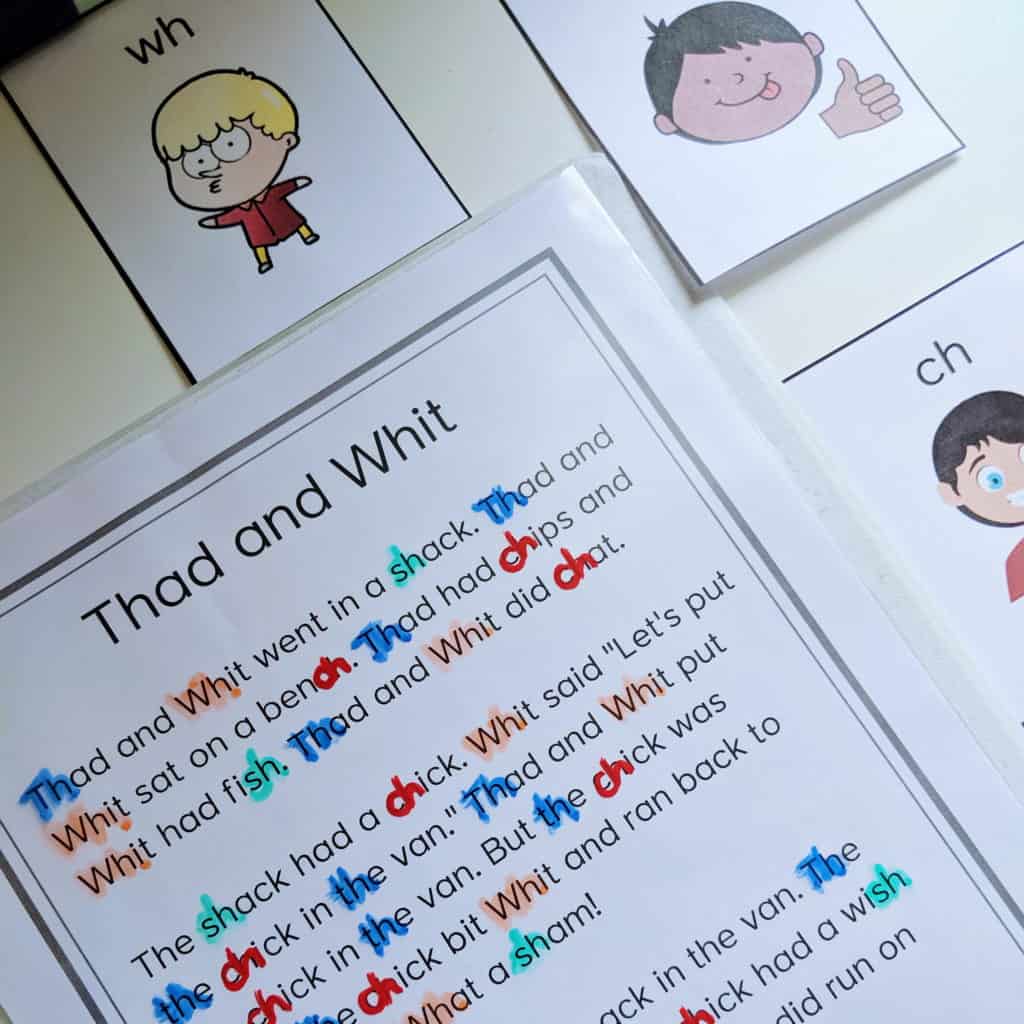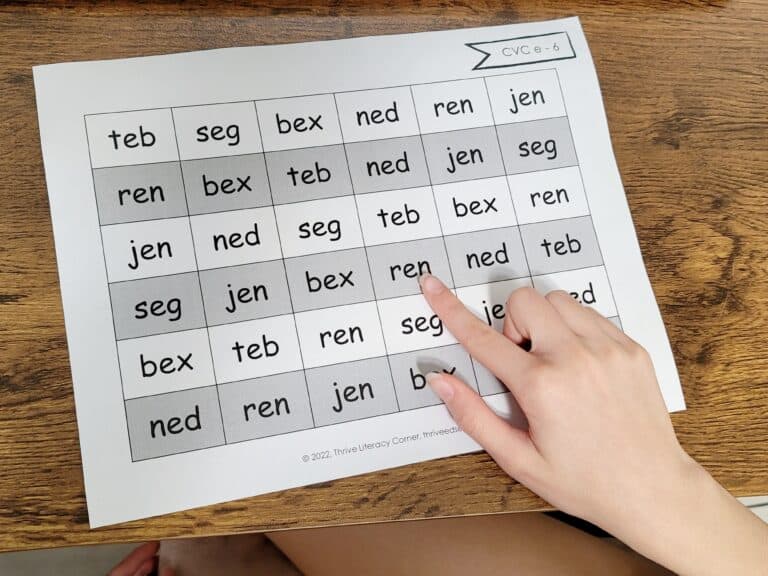Teaching Consonant Blends & Consonant Digraphs + FREE Word List & Chart
This post may contain affiliate links, and I will earn a commission if you purchase through these links. Please read the disclosure policy for more details.
What are blends and digraphs? And what’s the best way to teach them? These are very common questions I get all the time.
Many students really struggle with consonant blends and consonant digraphs, and some teachers are even confused about them
In this post, I’m talking all about consonant blends, consonant digraphs, how to teach them, and providing you with some free word lists and resources too!
Consonant Blends
Consonant blends are when two or more consonants are blended together, but you still hear each sound, such as in the words black and mist. Consonant blends are also referred to as consonant clusters.
There are beginning consonant blends and final consonant blends. Beginning consonant blends are blends that appear at the beginning of a word, such as brick and clay. Final consonant blends and blends that are at the end of a word, such as task and bend.
Some other examples of consonant blends include L blends, R blends, and S blends: black, frown, star.

3 Letter Blends
In addition to 2 letter blends, we have 3 letter blends, such as stream and splash. In these consonant blends, we can hear all 3 consonant sounds.
Consonant Blends Word List
Since I know having a consonant blends words list helps with planning, I created one that you can download for free by signing up to my email list.

Learn more about teaching l-blends here.
Consonant Digraphs
Consonant digraphs are different from consonant blends. A consonant digraph is when two consonants represent ONE new sound. For example, the words chin and wish contain consonant digraphs that make one sound. (Note that we also have vowel digraphs, aka vowel teams, in which the same principle applies: 2 letters represent one sound.)
Trigraphs are when three consonants represent one sound, as in patch.
Many consonant digraphs are commonly referred to as the ‘H Brothers‘ because they end in H: ch, sh, th, wh, and ph.

Consonant Digraphs Word List
Here’s a consonant digraphs word list which you can also download for free by signing up to my email list.

Learn more about teaching the H brothers digraphs here.
Blends and Digraphs Chart
I also made this blends and digraphs chart as a reference sheet you can post in the classroom or provide one to each of your students. This contains the most common blends and digraphs with a keyword and image. You can download this for free by signing up below.

How To Teach Digraphs and Blends
Blends don’t actually need to be taught, since they are just sounds they already know. What some students might need is to practice blending and mapping words with consonant blends.
It’s important that students learn to focus on the sounds these letters represent. It’s very common for struggling readers to not hear a sound in a blend, or not realize they are misspelling a blend because they think it’s one sound when it’s really two or more.
You should, however, explicitly teach consonant digraphs in a systematic way. You don’t want to introduce too many new digraphs, just one or a few at a time, and provide lots of meaningful practice before moving to the next set. Students should be confident with all their consonants before introducing digraphs.
Use Phonogram Cards
When you introduce a new consonant digraph, use phonogram cards or a phonics poster. Using the card, you would introduce the new sound, say the keyword, and spell the sound aloud, all while showing the phonogram card to your students. Your students will repeat this and you would review using this card every day until mastered.

Read Words With Consonant Digraphs and Blends
Of course, you have to include actually reading words with consonant digraphs and blends if that’s what you’re working on.
I like to have a page for each digraph or blend that contains a list of words. Students highlight the specific digraph or blend and read the words. See the picture below for an example page from my L- Blends Activities. This is usually the first activity I do when introducing a new phonogram or spelling pattern.
One thing to note, and this is something I learned more recently, is that you should highlight each sound in a blend in a different color to remind students that they are two sounds, unlike a digraph.
Find some good decodable texts if you can, or create your own. You can also simply go on a digraph/blends hunt and have students scan any passage for words with digraphs.
Pictured below is a decodable passage from my H Brothers Digraphs Activities. I have students highlight each digraph with a different color before reading it.
You can also have students write or blend words with the digraphs or blends, or make words with phonogram cards or magnetic letters.
Phoneme Grapheme Mapping & Segmenting
I listed these together because they go hand in hand. Phoneme grapheme mapping and segmenting are two of the best activities for teaching digraphs and blends. By sounding out the word and associating each sound with a grapheme, students more easily read and spell consonant digraphs and blends. See below for an example of this activity using my Word Mapping Template.
Remember that when you are segmenting a word with blends, they do not go together in one sound box, but digraphs do go together in one sound box. Some fun ideas for segmenting include using Elkonin boxes, counting cubes, silicone bubble poppers, or any manipulative you have on hand.
Read more: Phoneme Grapheme Mapping Activities and How To Teach Phoneme Segmentation

Phonics Games
Games are always on the menu when practicing any phonics skills. There are so many free and affordable games on Teachers Pay Teachers that focus on consonant digraphs and blends. And you can always make your own if you’re good at that kind of stuff.
Below are 2 of the games included in my H Brothers Digraphs Activities and L Blends Activities. Both sets contain a variety of activities for each skill.
Dictation
I love using dictation in my lessons so no surprise you’re seeing it here again. After working on your target phonics skill, do a quick dictation at the end of your lesson. I like to do these at the end of every tutoring session but in the classroom, you can do them every 2-3 days with the whole class or at the end of a small group activity.
Below is an example of a dictation activity using my dictation sheets that you can download for free in my freebies library. Simply choose a few target sounds, words, and sentences (that you explicitly taught, nothing new!) to dictate to students once. This takes a few minutes and gives you instant feedback about who needs more help.

When to teach digraphs and blends
When to teach each type depends on your curriculum. Usually, common consonant digraphs like sh and ch are taught first because students encounter many words with these graphemes in their early years. Sometimes trigraphs are taught along with or just after digraphs since they represent the same sound. After this, you’ll see l-blends, r-blends, and s-blends taught. Three-letter blends are usually taught last.
But as I previously stated, you don’t have to spend any time on consonant blends lessons, unless you have students struggling with them.
What about qu, ng, and nk?
These digraphs and blends are constantly being debated. Are they digraphs or blends? Well, since digraphs represent ONE sound, I would say only ng is a digraph. Qu and nk clearly represent two sounds so I would consider them blends. But really, their label does not matter!
Qu is always taught together because Q is almost always followed by U. But the sound this phonogram represents is /kw/. It’s up to you if you want to teach this with digraphs or blends, but I would teach this as a blend that’s almost always one unit.
Nk is similar. You can hear the /ng/ and the /k/ sounds when you say this blend aloud. I teach this as a welded sound, along with /ing/, /ang/, /ong/, /ung/ and the variations of vowel+nk. Some programs also teach /ild/, /old/, /all/, /am/, and /an/ as welded sounds. I say just teach it the way your curriculum has it. It doesn’t matter what they are called, but that students understand they are more than one sound and can read and spell them.
Bottom Line
Explicit and systematic instruction in consonant digraphs and ample practice mapping and blending consonant blends are the most important things to consider when planning to teach blends and digraphs. The activities outlined above will help you effectively teach your students how to read and write blends and digraphs.
Sources:
- Structured Literacy Interventions: Teaching Students with Reading Difficulties, Grades K-6
- How To Teach Spelling by Laura Toby Rudginsky and Elizabeth C. Haskell
- Phonics and Spelling Through Phoneme-Grapheme Mapping by Katheryn E. S. Grace
Want to remember this? Save Blends and Digraphs: The Ultimate Guide to your favorite Pinterest board!



















I love these